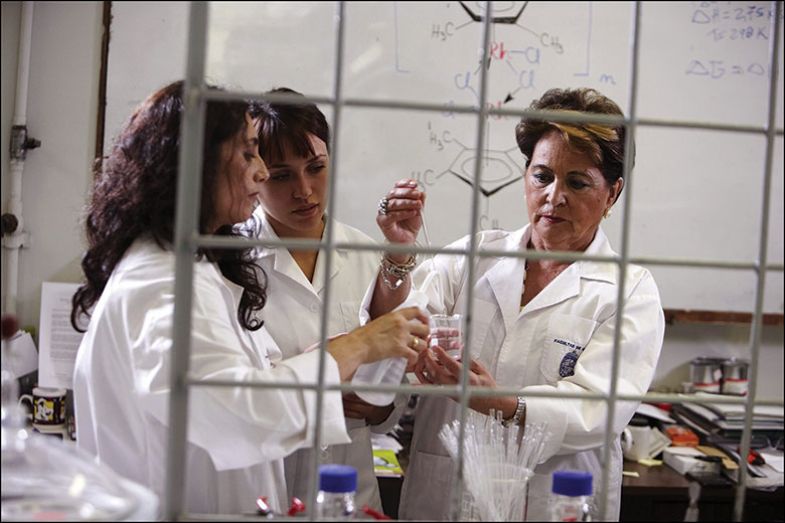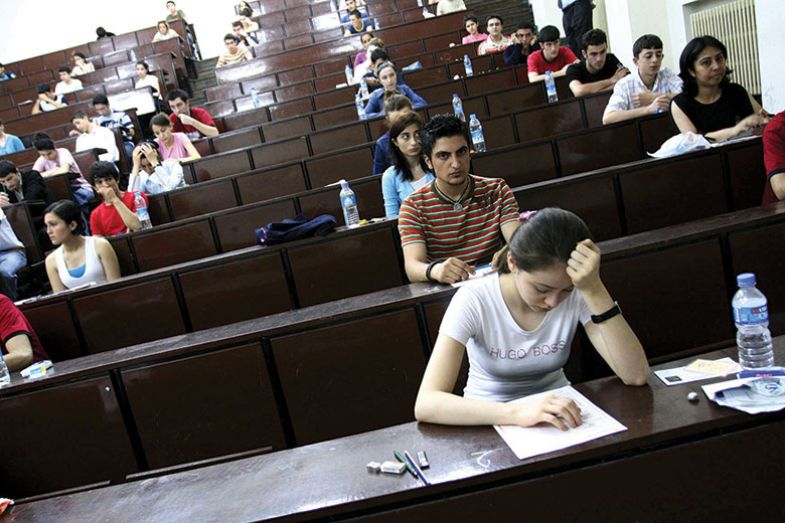Browse the full Emerging Economies University Rankings 2020 results
In November 2016, Times Higher Education boldly announced a new group of countries that could grow into star players in global higher education, based on research conducted in partnership with the Centre for Global Higher Education.
The TACTICS (Thailand, Argentina, Chile, Turkey, Iran, Colombia and Serbia) all had a gross domestic product of less than $15,000 (£11,000) per capita, but in each nation at least half the youth population was enrolled in higher education and at least 30,000 scholarly papers were published annually, and both these figures were growing. Each country also had a field-weighted citation impact of at least 0.75 (compared with a world average of 1.0) and at least one university in the THE World University Rankings.
But three years on, how are some of these countries progressing, and are they still on track to become future stars in higher education?
Five of the TACTICS nations feature in the 2020 THE Emerging Economies University Rankings (Iran and Serbia are the exceptions), and all of them bar Argentina have increased their representation in the table in the past year. There are also signs that the nations have been making steps to improve their research quantity and quality.
However, there are concerns that efforts to push forward on research are occurring too quickly and without the requisite resources, and that incentives are too focused on Western measures of success.
Chile
In Chile, it is now mandatory for all universities to gain accreditation as part of new higher education reforms designed to improve the quality of the university system.
But Daniela Véliz, assistant professor of education at the Pontifical Catholic University of Chile and a scholar at the Millennium Nucleus Student Experience in Higher Education in Chile research centre, says that only universities that conduct research can receive the maximum accreditation of seven years.
Coupled with the fact that research institutions can gain additional government funding, many institutions that were previously teaching-oriented are now attempting to focus on research, regardless of whether they have the appropriate environment or resources, she says.
“It’s not just [about] hiring people and making them produce papers. In many areas, you need labs; you need infrastructure that supports the research. We don’t have that in plenty of institutions,” she adds.

As a result, the majority of research in Chile is produced by just two or three universities, she says.
But Véliz says that university rankings are having a positive impact on the global visibility of Chile’s top universities.
Most senior leaders did not consider international league tables to be important in 2014, according to a study she conducted. But when she repeated the research in 2017 – after several Chilean universities started appearing in or climbing up global rankings – “the discourse changed dramatically”, Véliz says.
Although their strategies were not driven by rankings, the leaders were paying attention to the results, and they noticed that the number of foreign universities that wished to visit their institution or department to see “what we’re doing and how we’re doing it” had “grown immensely”, she explains.
The education department at the Pontifical Catholic University of Chile, for example, typically received about six requests annually for visits from international universities, but this has grown to about 50 in the past couple of years.
“Institutions that you would never have thought want to work with us really want to partner with us in many ways. In our school, we work closely with the University of Michigan and Stanford,” Véliz says.
“In the past, we didn’t think that rankings in Latin America were going to impact so much the way we look abroad and [the way] we see each other. Now it’s not that we work for the rankings, but I think that rankings are relevant not to just Harvard and MIT and the University of Oxford; they have an impact in other types of institutions and countries.”
Colombia
Ivan F. Pacheco, an international education consultant, says Colombia faces similar challenges to Chile.
“We have five or six research universities in the international understanding of research universities. Many others are trying to keep pace or are making really good efforts to become research universities [despite their] limited resources,” he says.
Until recently, public universities in Colombia had roughly the same budgets as 30 years ago, after adjusting for inflation and the cost of living, even though most had much larger enrolments and were undertaking more activities. Although the government finally allocated more money for universities, after a decade of negotiation, most of it has gone to fund staff salaries and basic maintenance, Pacheco says.
He believes that part of the problem is the trend for all institutions to want to excel at research.
“Universities that could be really good teaching universities are measured using the standards for research universities. Faculty, for example, are expected to publish in two or more indexed journals a year; and to be able to publish in those journals, you need to have other conditions [to support] research,” he says. “Teaching, which has always been a challenge to measure, has been underestimated in my opinion.”
However, Pacheco continues, to “counterbalance some of those limitations”, Colombian universities are increasingly creating alliances with institutions in other countries to “share faculty or resources or conduct joint research projects”.
“They are partnering with universities from the US and Europe and countries with a stronger tradition of research, including Brazil…Through these alliances, you have exposure and you have the ability to publish in international journals,” he says.

Turkey
Elsewhere among the TACTICS, Turkey has ambitions to improve its higher education visibility on the global stage. The government aims to see two universities ranked among the world’s top 100 by 2023, the 100th anniversary of the Republic of Turkey.
But Fatma Mizikaci, associate professor of education at Ankara University, does not believe this will be achieved, based on present levels of investment in higher education.
Less than 2 per cent of Turkey’s GDP is spent on research and development, compared with more than 2 per cent in China, 2.3 per cent in Japan and 4.5 per cent in South Korea, she says.
However, for Mizikaci, one of the main higher education issues in the country is access.
Although about 2 million young people take the general university entrance exam each year, only about 400,000 get a place on a four-year bachelor’s programme, she says.
“There is a problem of quantity, but maybe a bigger problem of quality,” she says. “Some of the universities offer very low-quality education. Young people do not want to go there.”

Thailand
A look at Thailand, in the view of Richard F. Doner, Goodrich C. White emeritus professor of political science at Emory University and an expert on south-east Asia, reveals “a distinct gap between the country’s level of ostensible economic development and the development of its educational infrastructure”.
And even though Thais have been aware of this for several decades and have witnessed a number of reform efforts, progress has been slow, he adds. Attempted reforms have included drives to improve vocational and technical training and moves to incentivise universities to focus on STEM subjects.
Doner says the politicisation of Thailand’s education and labour ministries, which results in frequent changes in ministerial appointments, and the country’s access to cheap labour from neighbouring countries are two reasons for its historic lack of improvement in education.
“Around half to two-thirds of the labour force in Thailand is on informal or short-term contracts. What that means is there is no labour movement pushing for better skills,” he says.
“You could say [Thailand has] grown on the basis of cheap labour, smart macroeconomic policy, good infrastructure policy and attractive foreign investment incentives. But, until recently, there have pretty much been no requirements for multinationals to invest in training or support training. They do it in-house, but not for the broader economy.”
However, Doner says there is concern that Thailand’s future economic growth will be limited unless it improves its education system and produces skilled workers for both Thai-owned and foreign firms in the country.
Another issue for Thai higher education, according to Doner, is that the country’s academics are increasingly pressured to “publish like the Americans” in top journals. This approach differs from that of several other Asian countries that have made strides in higher education, he says.
“The way Korea, Taiwan and Japan developed their education systems wasn’t to publish in what the Americans consider the best journals, but rather to develop knowledge and skills that serve the national economy,” he says.
“There are questions about the utility of key performance indicators focused on Western journal publications and whether that serves the economy. A bunch of professors who publish an article a year that maybe has 10 readers…that’s not what the private sector needs necessarily.”
Register to continue
Why register?
- Registration is free and only takes a moment
- Once registered, you can read 3 articles a month
- Sign up for our newsletter
Subscribe
Or subscribe for unlimited access to:
- Unlimited access to news, views, insights & reviews
- Digital editions
- Digital access to THE’s university and college rankings analysis
Already registered or a current subscriber? Login







